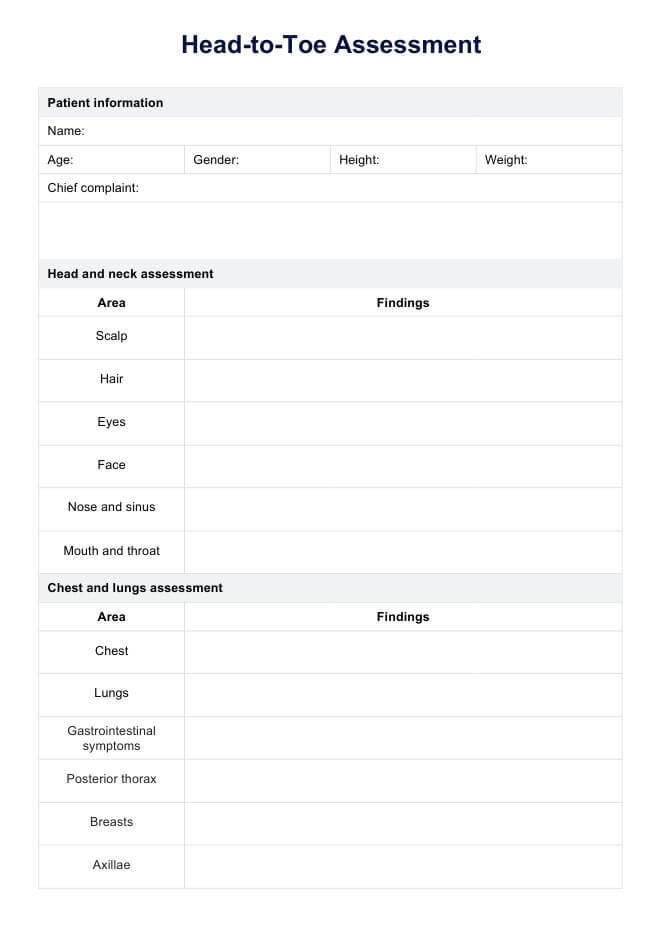To conduct a Head-to-Toe Assessment, gather patient information, then work through a standardized physical examination from head to toe to assess the patient's overall health and identify any potential issues.

Head To Toe Assessments
Learn how healthcare professionals perform a thorough Head to Toe Assessment of patients and use the results to assess a patient's health state.
Head To Toe Assessments Template
Commonly asked questions
The Head-to-Toe Assessment measures a patient's overall physical health and identifies potential issues requiring further examination or treatment.
To document a Head-to-Toe Assessment, healthcare professionals should record their findings clearly, concisely, and organizedly, typically using a standardized checklist or form. As you conduct the assessment, systematically document observations for each body system, including any abnormalities or concerns, while maintaining objectivity and avoiding personal opinions. Ensure that your notes are comprehensive enough to facilitate effective communication among the healthcare team and adhere to agency policies for documentation.
EHR and practice management software
Get started for free
*No credit card required
Free
$0/usd
Unlimited clients
Telehealth
1GB of storage
Client portal text
Automated billing and online payments











